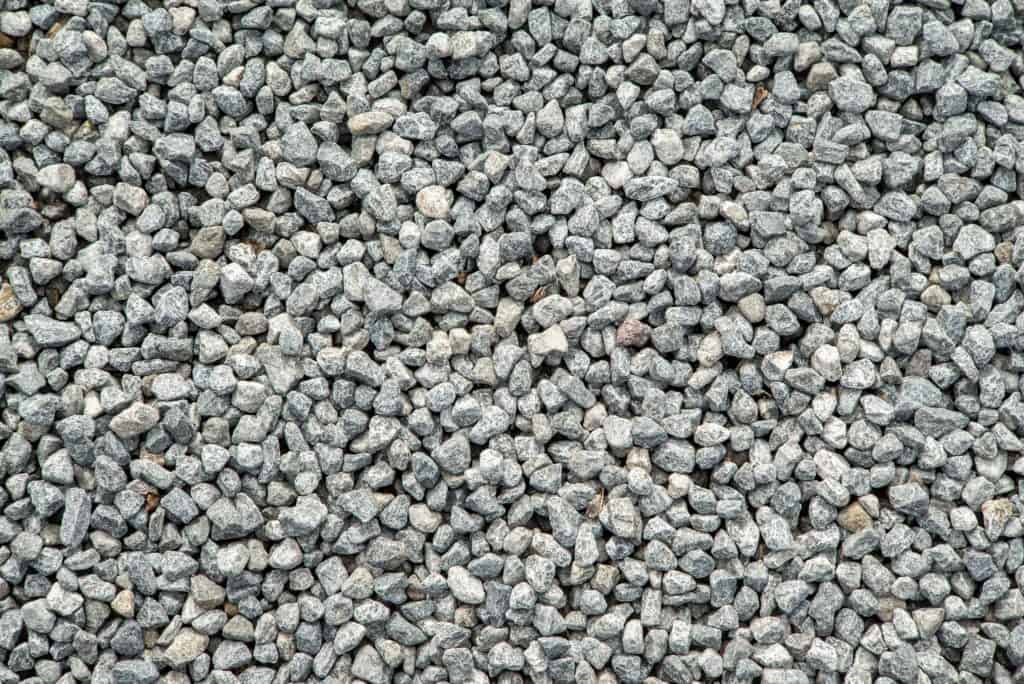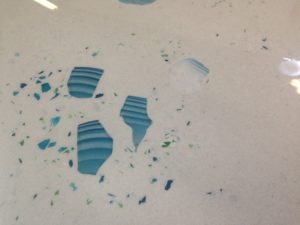Back in 2009, I got married and moved to Costa Rica with my new wife. It was a great adventure and an incredible way to start out a marriage. When we had first moved there, we spoke very broken and terrible Spanish. One day I got some kind of insect bite and needed to go to the pharmacy to pick up a prescription. We hailed a cab and when we got in, we asked the driver to take us the farmaSEEa (spelled phonetically for illustration). He looked at us like we had grown two heads. We repeated it a couple of times with no luck, the cab driver was as frustrated as we were. I was getting frustrated and mumbled to my wife something along the lines of ‘How does he not know what a f*c#ing farMAcia is?’ The driver’s ears perked up and he said ‘Ah! FarMAcia! Okay!’ or something like that and we were on our way. You may be thinking, great story Jonathan, what in the heck does this have to do with concrete?
Over the past 10 years, I’ve talked to a ton of people about concrete. I’ve spoken with homeowners, architects, designers, contractors and anyone else who would listen to me. I’ve given presentations to groups of people on the subject. I was invited to be a keynote speaker at the Concrete Decor Show in 2018 on how to communicate about concrete.

After 10 years and countless conversations, one thing is absolutely clear when talking about concrete: Everyone has something completely different in mind when they think about concrete. Don’t believe me? Ask 10 people, “What is the first word or phrase you think of when you hear the word ‘Concrete’?” I know exactly what will happen because every time I speak to any group I ask them to write down the answer to that question on a notecard I place in front of them. They then pass this notecard up to the front and I read the answer. Want to know the results? Here are just a handful to illustrate the point:
- Cold
- Sexy
- Rebar
- Structural
- Modern
- Industrial
- Rough
- Sidewalk
It’s like this every time. And the thing that I love the most about concrete is that is can be all of these things and more! But like our cab driver in Costa Rica, we need to be speaking the same language to understand one another and get to where we ultimately want to go, which in this instance is making awesome concrete that will last forever. For this reason, it’s important that we all understand a few basic things about concrete to get us all on the same page and speaking the same language.
Not all Concrete is Created Equal, and It Doesn’t Need to Be
^^^ That’s 1,900 year old Concrete ^^^ Also Concrete
Both of the above photos are concrete. On the left is the Dome of the Pantheon. Built nearly 1900 years ago, it is the world’s largest unreinforced concrete dome. It weighs 4,535 metric tons or a puny 9,997,964 lbs. On the right is some random sidewalk, also made of concrete.
As our photos illustrate, whether used for a dome or a sidewalk, concrete is ready to serve a variety of purposes and withstand centuries of use. Assuming it is mixed properly in the correct proportions.
Mirriam-Webster defines concrete, for our purposes, as:
2. a hard strong building material made by mixing a cementing material (such as portland cement) and a mineral aggregate (such as sand and gravel) with sufficient water to cause the cement to set and bind the entire mass
In the most basic terms:
WATER + CEMENT + AGGREGATE = CONCRETE
Let’s take a 30,000 ft overview at each of these ingredients, beginning with Water.
Concrete Needs Water
When water is added to cement, a chemical reaction called Hydration begins. Water is the magic ingredient that turns cement powder into the glue that holds together the mass that becomes concrete.
The amount of water used in a concrete mix is typically referred to as the Water to Cement Ratio or W/C (not to be confused with the water closets of Europe). We will dive into this topic in more depth and detail in the future, but for now, it’s important to know the following about adding water when mixing.
How much water you add affects the workability of concrete, or how easy/difficult it is to place concrete into a form. If you don’t add enough water, you’ll have a very stiff mix that is difficult to get into your forms and compact. When this mix hardens, it will likely have a lot of voids and holes in it.
On the other hand, if you add too much water, your mix will be much easier to fill your formwork without voids. It will be like pouring water into a glass. However, this will result in a very weak final product. This concrete will likely crack or chip very easily.
If you’re buying a bagged mix of any type, the manufacturer has recommended amount of water you should use to get the end results that they tout on the bag. For example, Quikrete® 5000 recommends on their data sheets that you use 6 pints up to a maximum of 10 pints (about 6.25-11#) of fresh water per 80lb bag of mix in order to attain 5000psi concrete.
So when you see the Youtube videos where someone (you know who you are) is using a garden hose to “eyeball” how much water they are adding to their mix, they either have so much experience that they know exactly how the concrete will look and feel with just the right amount of water, or most likely they don’t really have a clue what they’re doing and they’ll end up with a cracked slab.
Cement – The Glue that Keeps Concrete Together
Cement comes in a few varieties, the most common of which is Portland Cement. According to the Portland Cement Association:
Common materials used to manufacture cement include limestone, shells, and chalk or marl combined with shale, clay, slate, blast furnace slag, silica sand, and iron ore. These ingredients, when heated at high temperatures form a rock-like substance that is ground into the fine powder that we commonly think of as cement.
-Portland Cement Association
Portland Cement can be purchased in ridiculously heavy 94 lb bags in both grey and white, or you can buy it already blended with aggregates in the only slightly less ridiculously heavy 60 and 80 lb bags. More cement in a concrete mix usually means higher compressive strength (commonly measured in PSI), up to a point of diminishing returns.
As cement is usually the most expensive ingredient in a concrete blend, you’ll find that most bagged mixes from home centers contain a smaller percentage of it. There are a few blends available with just about half cement, half sand plus a few killer ingredients that help make the concrete even stronger.
Sidenote: Some cranky-pants concrete countertop makers get really pissy when you ask them if they make CEMENT countertops. Cement is one of the ingredients, not the final product. It can be pretty comical to hear some of their rants, I highly recommend it.
Concrete Aggregates

Typical aggregates in concrete mixes are pea gravel, sand, shell, glass, marble chips, etc. However, you can use just about anything as an aggregate, depending on what you need the concrete to do. I’ve known some people to try adding ground cork to a mix, I’ve used a recycled EPS foam product in some castings to reduce weight of larger pieces, and I’ve heard stories about people using chunks of old concrete as aggregate in new concrete. Combinations of aggregates can be used to create different finishes, the most recognizable being terrazzo.

The important thing to know is that aggregate size will be a factor that affects the final thickness of the concrete slab. A good rule of thumb is that the slab thickness should be minimum of 3x the largest aggregate. So if your mix has ¾” aggregate, your slab will be at least 2.25” thick.
Making sense of Reinforcement
One thing I haven’t mentioned yet is reinforcement. This is an important topic, and we will get into it in much more detail in later posts, but for now, here’s a really brief intro.
To understand why concrete needs reinforcement, you need to know about the forces that will cause failure in concrete. This is usually described in terms of Compression and Tension. Of these two, the main thing steel reinforcement addresses is Tension. Historically, steel rebar has been used to resist tensile failure in concrete. On its own, steel will bend a tremendous amount (with a great deal of effort). When used as rebar, it lends this characteristic to the concrete it is encased in and allows us to make concrete slabs that won’t sag in the middle and eventually fail.
Now, exactly how much and what size rebar is a discussion to have with a structural engineer based on the specifics of your project, so I won’t get into that. Another type of reinforcement is fiber reinforcement. It’s important to know that this type of reinforcement is not intended for structural spans. But it is the primary type of reinforcement we use in concrete countertops, sinks, and furniture.
Final Notes
One thing you’ll learn in speaking to people who craft things with concrete is they each have their own formulation or mix design, which is like a recipe for making concrete. Different blends of concrete can create vastly different aesthetic finishes, a topic we will cover in great detail in the future.
We’ve covered a lot of ground so far and we are barely scratching the surface. The big take away here is choosing the right mix and blending it together in the right way is what will ensure that your concrete project meets your expectations while withstanding the test of time.
Ready to Learn about Finishes?
Check out the next article in this series where we’ll overview some of the many ways to cast concrete to create unique looks.



